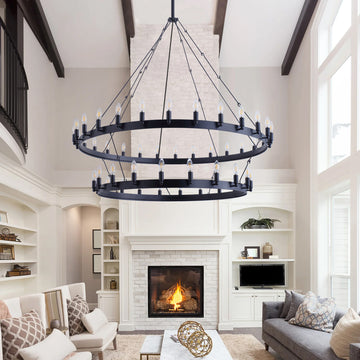The Top Trends in Pendant Lighting for 2021 and Beyond
Body
When it comes to interior design, lighting plays a crucial role in setting the ambiance and mood of a space. Pendant lighting, in particular, has been gaining popularity for its versatility and aesthetic appeal. As we look ahead to 2021 and beyond, it's essential to stay updated on the latest trends in pendant lighting to ensure that your space remains stylish and functional. In this article, we'll explore the top trends in pendant lighting for 2021 and beyond, providing you with insights and inspiration for your next lighting project.

1. Sustainable Materials and Designs
One of the most significant trends in pendant lighting for 2021 and beyond is the emphasis on sustainable materials and eco-friendly designs. As the world becomes more environmentally conscious, interior designers and lighting manufacturers are turning to materials such as bamboo, recycled glass, and natural fibers to create pendant lights that are both stylish and sustainable. These eco-friendly designs not only contribute to a greener planet but also add a unique and organic touch to any space.
2. Artisanal and Handcrafted Pieces
Another trend that is gaining momentum in the world of pendant lighting is the appreciation for artisanal and handcrafted pieces. In a world dominated by mass-produced goods, there is a growing desire for unique and one-of-a-kind lighting fixtures that showcase the craftsmanship of skilled artisans. Hand-blown glass pendants, intricately woven rattan shades, and metalwork with intricate detailing are just a few examples of the artisanal pieces that are making a splash in the world of pendant lighting.
3. Statement-Making Shapes and Sizes
When it comes to pendant lighting, the days of playing it safe with standard shapes and sizes are long gone. In 2021 and beyond, expect to see a surge in statement-making pendant lights that defy traditional norms. Oversized dome pendants, geometrically inspired shapes, and asymmetrical designs are all set to take center stage, adding a bold and contemporary touch to any space. These eye-catching fixtures not only serve as functional lighting but also double as works of art that command attention and admiration.
4. Technology Integration and Smart Lighting
As technology continues to advance at a rapid pace, it's no surprise that it has made its way into the world of pendant lighting. Smart lighting systems that allow for customizable control of brightness, color temperature, and even remote operation via smartphone apps are becoming increasingly popular. Additionally, the integration of energy-efficient LED technology into pendant lights is a trend that is here to stay. These advancements not only enhance the functionality of pendant lighting but also contribute to energy savings and environmental sustainability.
In conclusion, the world of pendant lighting is evolving, and the trends for 2021 and beyond reflect a shift towards sustainability, craftsmanship, innovation, and technology integration. Whether you're looking to update your home, office, or commercial space, keeping these trends in mind will ensure that your lighting choices are not only on-trend but also contribute to the overall aesthetic and functionality of the space.









Comments